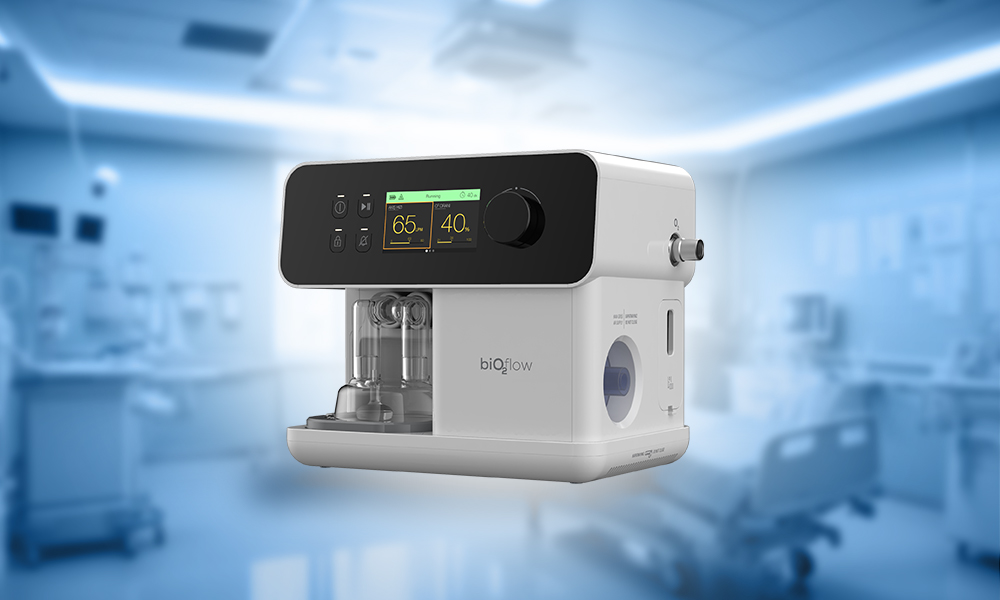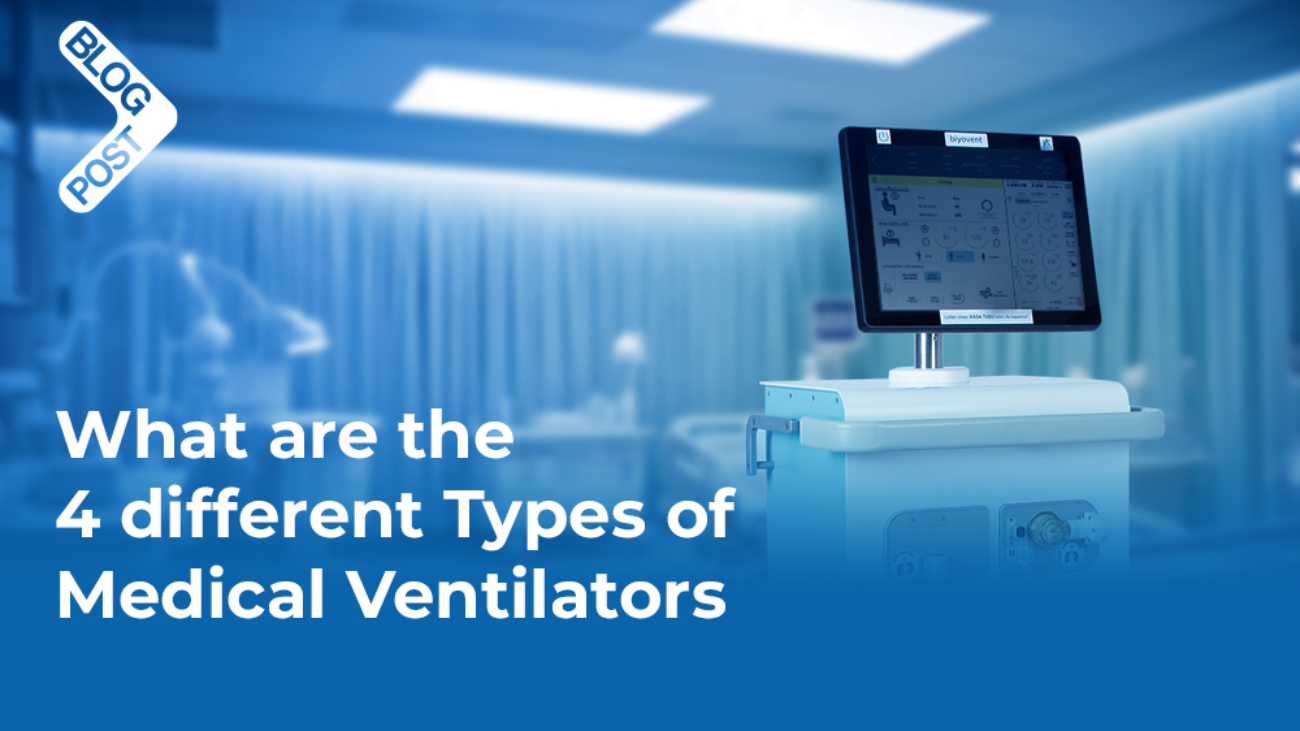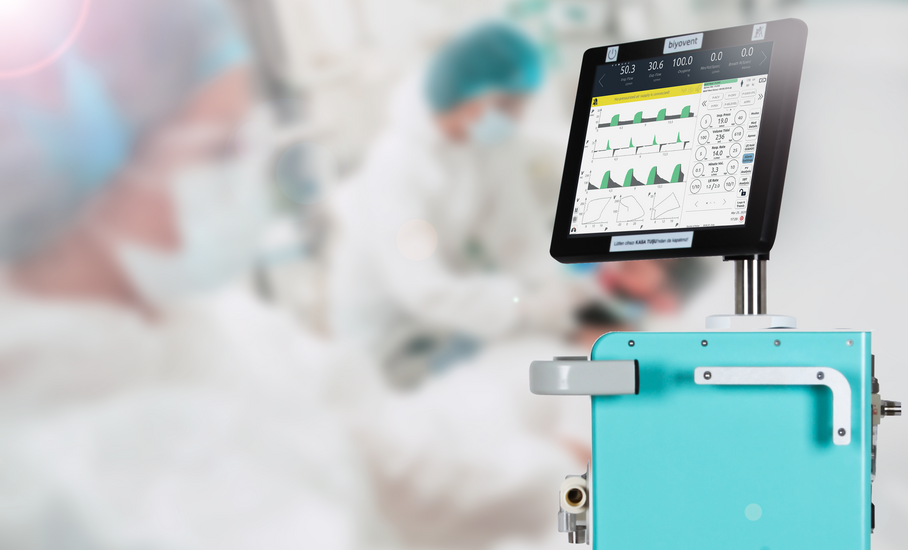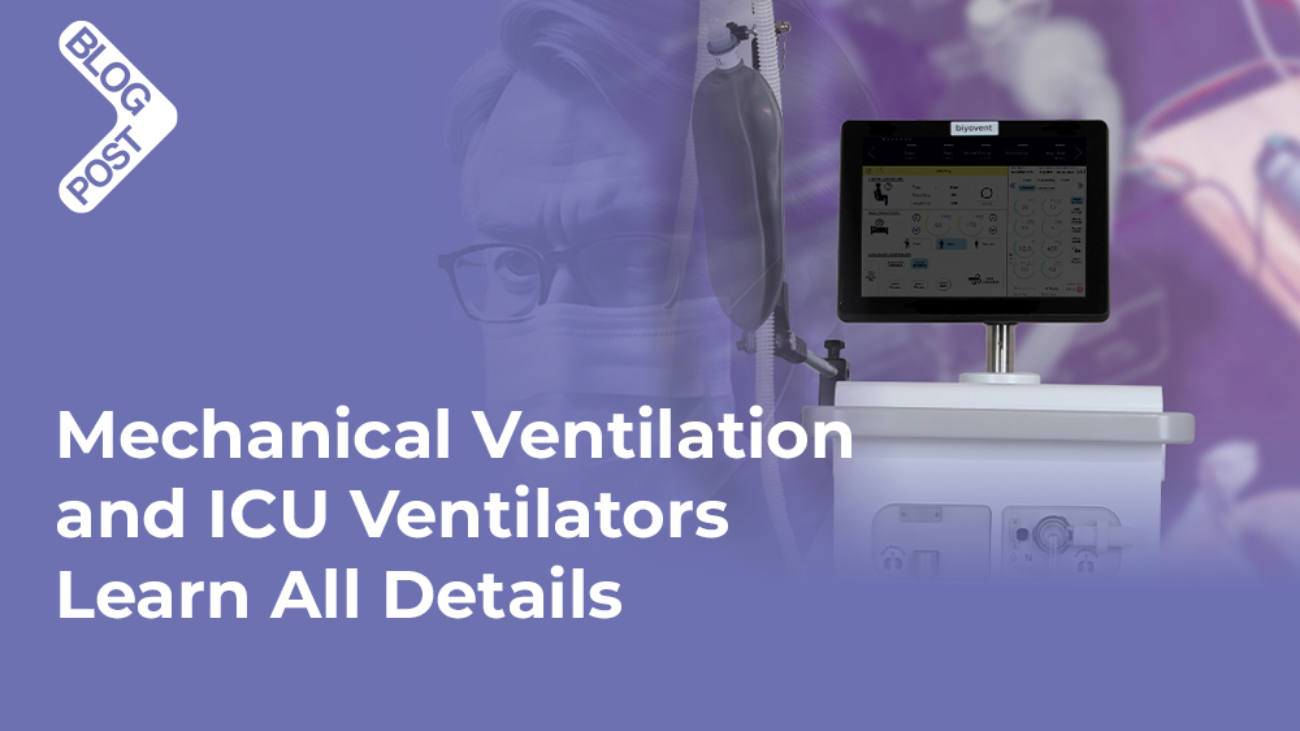Intensive Care Unit (ICU) is different, whereby individuals suffering from acute and critical respiratory conditions demand complex assistance. Mechanical ventilation has proved crucial for the medical care of these cases for decades. Mechanical ventilators are frequently used in pathological situations such as low oxygen levels or high carbon dioxide levels where the patient has difficulty breathing. Nevertheless, over recent years, there appears to be a new therapeutic way called high-flow oxygen therapy, which is likely to substitute or serve with traditional respiration practices. The goal is to create a particular focus on optimizing humidification to enhance patient comfort and respiratory support.
High-Flow Oxygenation (HFO)
In clinical applications, oxygen therapy can be given as low flow (with mask or nasal cannula) or high flow (Venturi mask or nonrebreathers). However, in conventional methods, some of the oxygen inhaled by the patient is not delivered completely. Since the oxygen is not heated and humidified, the patient may not tolerate it for long periods. High-flow oxygen therapy, which is mainly used for respiratory diseases in pediatric patients, has found a serious place, especially in the COVID-19 pandemic and has begun to be widely used in adult patients as well.
High-flow oxygen/cannula therapy is gaining widespread attention as an alternative approach to respiratory support in intensive care patients. This method is applied via air or oxygen mixer (rate up to 60 L/min at 21% to 100% oxygen fraction), humidifier, patient circuit and nasal cannula. The high-flow, warmed, humidified oxygen removes carbon dioxide from the anatomical dead space, making breathing easier and increasing patient comfort.
Benefits of HFO in ICU
The benefits of HFO go further than simple improvement in gas exchange. Compared to traditional mechanical ventilation, HFO offers numerous advantages:
- Comfortable for patients: The nasal prongs are soft and small. Several studies stated that patient comfort is higher with HFNC than with a conventional nasal cannula or face mask
- Warming and humidification of secretions: There is no chance for warming and heating oxygen when applying with a nasal cannula or face mask. In HFNC, oxygen is humidified and warmed before being administered to the patient. This increases the patient’s ability to tolerate treatment over a long period. This can facilitate the removal of mucus and other secretions from the airway.
- PEEP effect: Although the HFNC is an open system, the high-flow nasal cannula provides resistance to expiratory flow and increases airway pressure. PEEP decreases lung compliance, residual capacity reduction and elimination of refractory hypoxia. PEEP allows collapsed lung alveoli to open. It improves oxygenation and lung compliance.
- High flow rate: Access to 60 L/min oxygen flow, which is not possible with normal oxygen devices, is possible with HFNO devices. Flow rate, humidity and temperature can be adjusted with the device. This allows the treatment to be adapted to the individual’s condition, increasing effectiveness.
Mechanism Of Action And Clinical Applications
Nasal high-flow therapy contributes to improving the fractionation of alveolar gases by reducing nasopharyngeal dead space. The expandability of the nasopharynx provides significant inspiratory resistance relative to expiratory effort.
HFNO provides adequate flow rates to accommodate inspiratory flow and thus significantly reduces the inspiratory resistance associated with the nasopharynx and thus eliminates the associated work of breathing. Delivery of heated and humidified oxygen to the respiratory organs increases pulmonary compliance and reduces metabolic load compared to dry and cold gas. The high flow in the nasopharynx provides positive tensile pressure to activate the lungs.
High flow oxygen therapy indicates for hypercapnic respiratory failure, hypoxemic respiratory failure, post-extubation, preintubation oxygenation, acute heart failure and sleep apnea. In pediatric patients, it is mainly indicated for bronchiolitis, but also for pneumonia, croup, asthma and post-extubation.

Patient-Centered Care and Comfort
Patient comfort and satisfaction in the rigorous conditions of the ICU are critical aspects of providing quality health care. From the patient’s perspective, HFO significantly reduces discomfort associated with traditional mechanical ventilation.
- Reduced Discomfort: A soft nasal cannula and gentle airflow take away distress caused by the endotracheal tube, making patients more tolerant and less anxious.
- Improved Communication: Additionally, the methodology enables patients to communicate freely with each other during their stay, which facilitates an improved atmosphere.
- Enhanced Sleep Quality: Compared to mechanical ventilation, HFO allows for better rest and, consequently, better recovery of patients because it is less noisy and does not cause disruption.
Clinical Outcomes and Cost-Effectiveness
HFO therapy has been studied extensively and proven clinically beneficial. One of the most comprehensive studies investigating the effectiveness of nasal high-flow therapy is the Clinical Guideline published by the American College of Physicians. According to this guideline, compared to NIV, it has been shown to improve clinical outcomes as an initial treatment for acute respiratory failure and improve patient comfort by reducing re-intubation compared to standard oxygen therapy. It is stated that it causes fewer complications in patients than NIV or COT.
The effectiveness of HFNO in patients with hypoxia in acute heart failure was investigated in a retrospective cohort study. It has been stated that there is a better improvement in left ventricular parameters in patients receiving HFNO treatment compared to non-invasive positive pressure ventilation. It has been concluded that HFNO may be an ideal model, especially in hypoxemic AHF patients.
In another meta-analysis investigating the use of HFNO in anesthesia induction, it was compared with FMV. The use of HFNo for anesthesia induction has been shown to significantly improve oxygenation compared to FMV.
In addition to those mentioned above, many scientific studies are showing the effectiveness of HFNO.
Cost Savings
In a study conducted in England, the cost-effectiveness of HFNO use was investigated. Three different cost-effectiveness models were used in this study: the pre-intubation model and the post-extubation model in low-risk and high-risk patients. The use of HFNO in first-line treatment is reported to provide estimated savings of £469 per patient compared to standard oxygen therapy and £611 compared to NIV. NHF cost savings for the high severity subgroup were found to be £727 compared to standard oxygen and £1,011 compared to NIV.
For post-intubation low-risk patients, NHF provides an estimated cost saving of £156 compared to standard oxygen. The savings for post-intubation high-risk patients was stated to be £104.
Another study in infants with bronchiolitis compared low-flow oxygen therapy and HFNO therapy. In this study, treatment costs were found to be between $1786-3600 for HFNO, while these figures were found to be between $2175-5125 for standard treatment. Based on this, the cost-effectiveness of high-flow oxygen therapy can be demonstrated.

Introducing Bio2Flow: Your Partner in High-Flow Oxygen Therapy The Right Way
Giving a significant gain to the medical device world with Biyovent, an Intensive Care type mechanical ventilation device, Biosys continues to produce new device solutions for the sector. BiO2Flow, a high-flow oxygen therapy device, is a revolutionary device.
If you would like to get detailed information about this revolutionary device, you can browse our catalogue and get the details from the link. For our other products, follow the link.
References
- Walter K. Mechanical Ventilation. JAMA. 2021;326(14):1452. doi:10.1001/jama.2021.13084
- Heated and humidified high-flow nasal oxygen in adults: Practical considerations and potential applications, Robert C Hyzy, MD, Uptodate, Access time: Dec 2023
- Huiying Gao, Lin Chen, Xiaofei Kang, High-Flow Nasal Cannula Oxygen Therapy in Patients With Acute Heart Failure: A Meta-analysis, The Journal for Nurse Practitioners, Volume 19, Issue 5,2023, https://doi.org/10.1016/j.nurpra.2023.104602.
- Nishimura M. High-Flow Nasal Cannula Oxygen Therapy in Adults: Physiological Benefits, Indication, Clinical Benefits, and Adverse Effects. Respir Care. 2016 Apr;61(4):529-41. doi: 10.4187/respcare.04577. PMID: 27016353.
- Toffaletti JG, Rackley CR. Monitoring oxygen status. Adv Clin Chem 2016;77:103-24.
- Emily Eaton Turner &Michelle Jenks (2017), Cost-effectiveness analysis of the use of high-flow oxygen through nasal cannula in intensive care units in NHS England, https://doi.org/10.1080/14737167.2018.1411804
- Paula Heikkilä MSc, Leena Forma PhD, Matti Korppi MD, PhD (2016), High-flow oxygen therapy is more cost-effective for bronchiolitis than standard treatment—A decision-tree analysis, Pediatric Pulmonology, https://doi.org/10.1002/ppul.23467
- Kevin Dysart, Thomas L. Miller, Marla R. Wolfson, Thomas H. Shaffer, Research in high flow therapy: Mechanisms of action, Respiratory Medicine, Volume 103, Issue 10,
- 2009,Pages 1400-1405, https://doi.org/10.1016/j.rmed.2009.04.007.
- Baldomero, A. K., Melzer, A. C., Greer, N., Majeski, B. N., MacDonald, R., Linskens, E. J., & Wilt, T. J. (2021). Effectiveness and Harms of High-Flow Nasal Oxygen (HFNO) for Acute Respiratory Failure: An Evidence Report for a Clinical Guideline by the American College of Physicians. Annals of Internal Medicine, 174(7), 952. https://doi.org/10.7326/M20-4675
- Song, Jl., Sun, Y., Shi, Yb. et al. Comparison of the effectiveness of high-flow nasal oxygen vs. standard facemask oxygenation for pre- and apneic oxygenation during anesthesia induction: a systematic review and meta-analysis. BMC Anesthesiol 22, 100 (2022). https://doi.org/10.1186/s12871-022-01615-7
- Tong, Xiao MDb; Tong, Ningning MDa; Yao, Feifei MDc; Yan, Jing MDd; Ci, Caizhe MDd,*. Clinical outcomes of high-flow nasal cannula oxygen therapy in acute heart failure patients with hypoxemia: A retrospective cohort study. Medicine 101(43):p e31124, October 28, 2022. | DOI: 10.1097/MD.0000000000031124








